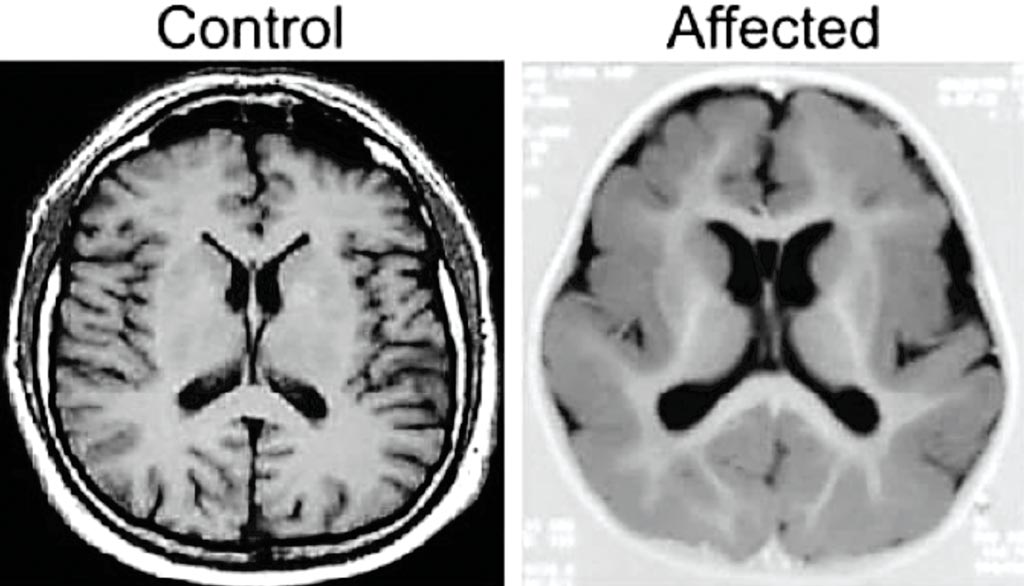Genetic Mutation Identified in Childhood Brain Disorder
By LabMedica International staff writers
Posted on 21 Aug 2018
Pachygyria is characterized by abnormal movement of brain nerve cells, known as neurons, during development of the brain and nervous system and is caused by a breakdown in the fetal neuronal migration process due to genetic or possibly environmental influences.Posted on 21 Aug 2018
During normal embryonic growth, immature cells that later develop into specialized nerve cells (neurons) normally migrate to the brain's surface, making several layers of cells. When this process is impaired, the cells do not migrate to their locations, resulting in too few cell layers and absence (agyria) or incomplete development (pachygyria) of gyri.

Image: A comparison of an unaffected brain and an affected brain with pachygyria (Photo courtesy of Case Western Reserve University School of Medicine).
A team of global genetics experts led by those at Case Western Reserve University Medical School (Cleveland, OH, USA) have discovered a genetic mutation and the faulty development process it triggers, causing a debilitating brain-based disorder in children, known as pachygyria. The scientists used genetic sequencing to study three families affected by the disease, and discovered that children with pachygyria have a mutation in both copies of the alpha-N-catenin gene (CTNNA2), each alteration coming from one parent. The mutation leads to loss of CTNNA2, which the team then showed affected how nerve cells travel from their source of origin in the developing brain to their concluding destination in what eventually becomes the neocortex, a process called neuronal migration.
The investigators found that when CTNNA2 is absent due to genetic mutation, excessive amounts of Actin-Related Proteins (ARP2/3) bind to actin, ultimately disrupting the mechanisms needed for appropriate migrating and branching out of nerve cells. Specifically, resultants ARP2/3 over-activity leads to excessive branching, which impairs neuron growth and stability. The finding raises the possibility of genetic engineering through techniques such as CRISPR-Cas9.
In addition to uncovering a key gene responsible for pachygyria and describing how its mechanisms operate, the scientists discovered a variation of the condition. Typically in cases of pachygyria, either the front or back of the brain displays smooth, non-wrinkled brain surface features. In cases of normal brain development, these areas are convoluted, resembling cauliflower in appearance. In the three families studied, they discovered that both the front and back of the brain were smooth.
The authors concluded that their findings identify CTNNA2 as the first catenin family member with biallelic mutations in humans, causing a new pachygyria syndrome linked to actin regulation, and uncover a key factor involved in ARP2/3 repression in neurons. Ashleigh E. Schaffer, PhD, an assistant professor of genetics and lead author of the study, said, “Our finding that alpha-N-catenin mutations cause pachygyria is an important step in understanding how neuronal development is regulated. The fact that we found this unique feature of back and front smooth brain led us to conclude that a new gene, not previously linked to pachygyria, is responsible. This turned out to be the case,” The study was published on July 16, 2018, in the journal Nature Genetics.
Related Links:
Case Western Reserve University Medical School














